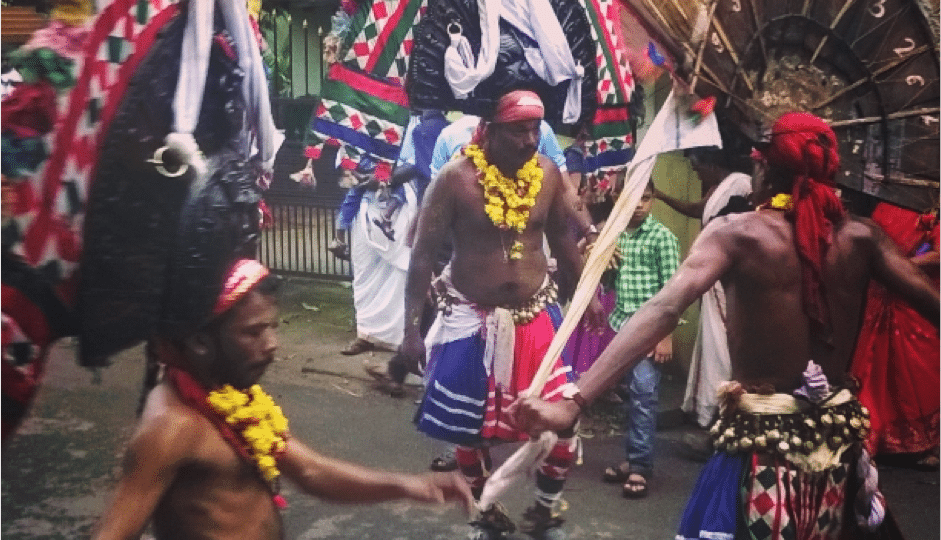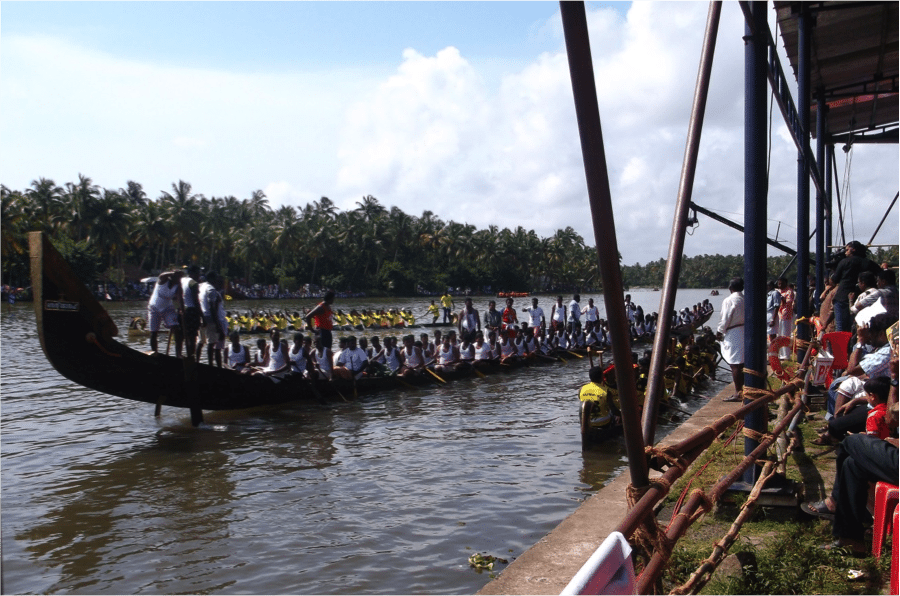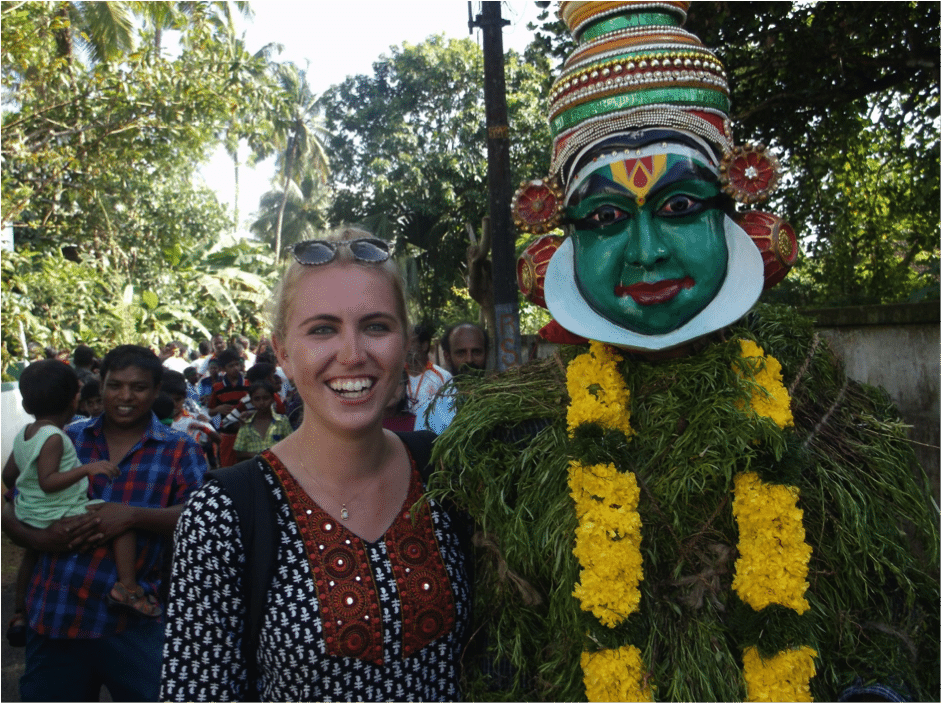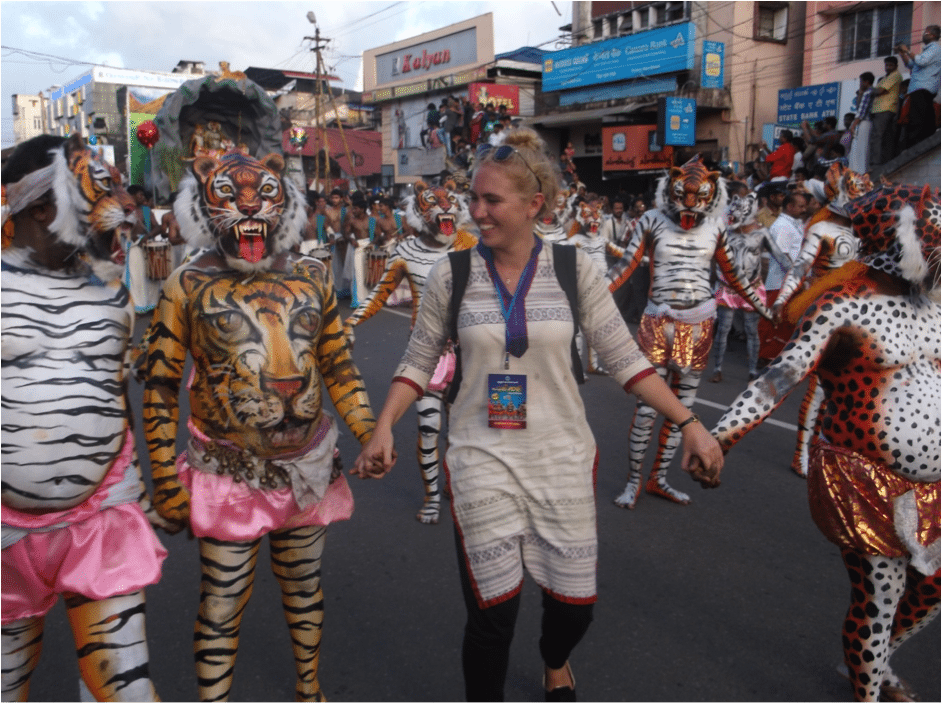Special Series: Indian Festival Costumes Issue 4, “Onam: an Initiation to Kerala”
Emma Hollows is a student from Manchester, England, going into her final year at the University of Cambridge. From August 7th to September 24th she spent 7 weeks of her summer vacation in India exploring Gujarat and Kerala to investigate the costumes and make-up of Indian celebrations. During her trip, Emma wrote a blog series for Performing Arts Abroad as she participated in various festivals and attended Kerala Kalamandalam, a performing arts university teaching students the music, dances, costumes and make-up used in festivals. This is the fourth issue of this special series, being released after Emma’s return to the UK…
Oh my word Onam is blooming fantastic! We should definitely have a similar thing back home! Onam is a celebration of Keralan culture when everyone has a vacation from school and work to spend time with family attending parades, Vallam Kali and Pulikkali. The atmosphere is wonderful with music and dancing and everyone enjoying spending time together.
On the first day I enjoyed a traditional Onam lunch of Sadya: rice and pappads with lots of different dishes all presented on a banana leaf before heading down to a local parade. The parade was awesome! Most Onam participants are male, both performers and in the crowds. The women who watch the celebrations do so from the house porches whereas the men and myself were running along with the action – and there is so much to see! Men transformed into women, towering above the crowd on stilts; a jazz band; a team of drummers; theyyam performers; and hundreds of people there to watch. My favourite performers were the theyyam dancers; their costumes were colourful skirts, bells and a huge headdress made of carved wood which so overbalanced them that they had straps hanging down from each side which they could hold on to while jumping and spinning around.
The next day I went to watch Vallam Kali, the Kerala snake boat race. It isn’t quite the Oxbridge boat race – replace a backdrop of London and the Thames with palm trees and the backwaters of Kerala with war canoes boats of up to around 60 men on board. With the sheer amount of men on board, the drumming and the shouting to keep the strokes in time, the excitement in the atmosphere was electric!
At another parade I saw the kummatty performers getting ready in their grass outfits. Grasses are tied into sheets the day before and these are tied around the performer’s entire body crowned with a colourful wooden mask. Wearing clothes under the grass means that it isn’t too itchy but the men had trouble bending at the elbows and knees so had to be lifted into the truck to take them to the start of the parade. During the parade they are having a party dancing, jumping, singing and waving to the crowds accompanied by a band of deafening drummers.
Pulikkali is a tradition originating in colonial times which Indians have now adopted as their own to create an annual spectacle on the final day of Onam in Thrissur and other cities across Kerala. Thousands of men painted as tigers dance their way around Swaraj Round in the centre of Thrissur to the beat of chenda drums. I was adopted by a team and got to help paint them in the morning, although I wasn’t there at 5am when they started because it takes 3 hours to paint each man! They also wear a mask and a belt of bells which can weigh 12-14kg. Running around all the teams dancing and even drumming by the end of the day was so much fun I felt like a kid again! The teams compete for the best tigers, best drummers, best float design and best discipline. Our team won all the awards apart from best drumming so hopefully that wasn’t my fault!
Written by Emma Hollows
Performing Arts Abroad guest blogger and costume designer



